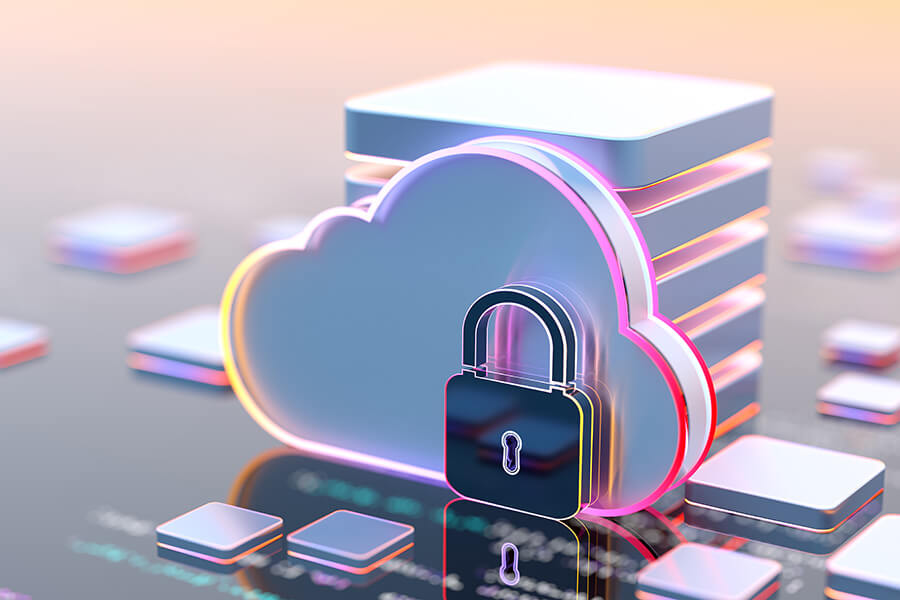Zero Trust Security Model Implementation Guide for Modern Enterprise Networks
Traditional network security approaches that rely on perimeter defenses are becoming increasingly inadequate in today’s distributed work environments. Cybercriminals continue to exploit the fundamental assumption that users and devices inside a corporate network can be trusted by default.
Zero trust is a cybersecurity framework that operates on the principle of “never trust, always verify,” requiring continuous authentication and authorization for every user, device, and application attempting to access network resources. This security model abandons the concept of trusted network zones and instead treats every access request as potentially malicious.
Organizations implementing zero trust architecture fundamentally reshape how they approach network security, data protection, and user access management. The framework encompasses specific principles, technologies, and implementation strategies that address modern security challenges while providing a structured path toward enhanced organizational resilience.
Core Principles of the Zero Trust Security Model
The Zero Trust security model operates on four fundamental principles that eliminate implicit trust within network environments. These principles establish continuous verification, restrict access permissions, implement ongoing authentication processes, and create isolated network boundaries.
Never Trust, Always Verify
The foundational principle of Zero Trust is that no entity deserves automatic trust, regardless of its location or previous access history. Every user, device, and application must undergo verification before accessing any resource.
This approach treats all network traffic as potentially malicious. Internal users face the same scrutiny as external visitors. Geographic location and network position hold no influence over trust decisions.
Verification components include:
- Identity confirmation through multiple factors
- Device health and compliance checks
- Real-time threat assessment
- Behavioral analysis patterns
The Zero Trust model eliminates the traditional castle-and-moat mentality. Organizations no longer rely on perimeter defenses as the primary security layer. Instead, verification occurs at every access attempt.
Principle of Least Privilege
Least privilege access ensures users receive only the minimum permissions necessary to complete their specific job functions. This principle limits potential damage from compromised accounts or malicious insiders.
Organizations implement role-based access controls that align with business requirements. Employees are not authorized to access resources outside their defined responsibilities. Administrative privileges require additional justification and approval processes.
Key implementation elements:
- Granular permission assignments
- Regular access reviews and audits
- Automatic privilege expiration dates
- Just-in-time access provisioning
The principle of least privilege extends beyond user accounts. Applications and services also operate with minimal required permissions. This restriction prevents lateral movement during security incidents.
Continuous Authentication and Authorization
Traditional authentication methods verify identity once during login sessions. Zero Trust security models implement continuous authentication throughout user sessions to detect anomalous behavior.
Systems monitor user activities in real-time to identify unusual patterns. Location changes, access time variations, and resource requests trigger additional verification steps. Authorization decisions occur dynamically based on the current context.
Continuous verification factors:
- Session duration and activity levels
- Resource sensitivity classifications
- Network location and device status
- Risk scores from behavioral analytics
Multi-factor authentication becomes standard practice rather than optional security enhancement. Biometric data, hardware tokens, and mobile device confirmations supplement traditional password systems.
Network Segmentation and Micro-Segmentation
Network segmentation divides infrastructure into smaller, isolated zones to contain potential security breaches. Micro-segmentation extends this concept by creating boundaries around individual workloads and applications.
Each network segment operates independently with specific access controls. Traffic between segments requires explicit permission and monitoring. This architecture prevents attackers from moving freely through compromised networks.
Segmentation strategies include:
- Application-specific network zones
- User group isolation boundaries
- Device type segregation
- Data classification-based separation
Zero Trust architecture treats every network connection as untrusted by default. Internal communications receive the same security scrutiny as external traffic. Software-defined perimeters replace traditional network boundaries, enabling flexible and policy-driven access controls.
Key Components and Technologies in Zero Trust Architecture
Zero Trust architecture relies on integrated security technologies that verify every access request and continuously monitor user behavior. These components work together to create layered protection through identity verification, device compliance checking, and real-time threat detection.
Identity and Access Management (IAM)
IAM systems form the foundation of Zero Trust by controlling who can access what resources within an organization. These platforms verify user identities and enforce access policies based on roles, permissions, and security requirements.
Core IAM Functions:
- User identity verification and authentication
- Role-based access control (RBAC) implementation
- Privileged access management for administrative accounts
- Identity lifecycle management from onboarding to offboarding
Popular IAM solutions include Active Directory for on-premises environments and cloud platforms like Okta for modern hybrid infrastructures. These systems integrate with existing applications to provide centralized identity management.
IAM platforms enable organizations to implement least-privilege access principles. Users receive only the minimum permissions necessary for their job functions. This approach reduces the attack surface and limits potential damage from compromised accounts.
Advanced IAM systems provide detailed audit trails and reporting capabilities. Organizations can track user access patterns and identify potential security risks through comprehensive logging and analytics.
Multi-Factor Authentication (MFA) and Strong Authentication
MFA adds critical security layers beyond traditional passwords by requiring multiple verification methods. Users must provide something they know, something they have, or something they are to gain access to protected resources.
Common MFA Methods:
- SMS or voice calls with verification codes
- Authenticator apps generate time-based tokens
- Hardware tokens or smart cards
- Biometric verification using fingerprints or facial recognition
Strong authentication goes beyond basic MFA by implementing adaptive authentication mechanisms. These systems analyze user behavior, device characteristics, and contextual factors to determine authentication requirements.
Risk-based authentication adjusts security requirements based on access patterns and threat levels. Low-risk scenarios may require minimal authentication, while suspicious activities trigger additional verification steps.
Continuous authentication monitors user behavior throughout sessions rather than just at login. This approach detects account takeovers and suspicious activities in real-time, providing ongoing protection for identities.
Security Information and Event Management (SIEM)
SIEM systems collect, analyze, and correlate security data from across the entire IT infrastructure. These platforms provide real-time visibility into potential threats and security incidents within Zero Trust environments.
SIEM solutions aggregate logs from firewalls, endpoints, applications, and network devices. They use machine learning and behavioral analytics to identify unusual patterns that may indicate security breaches or policy violations.
Key SIEM Capabilities:
- Real-time threat detection and alerting
- Security incident response automation
- Compliance reporting and audit trails
- Integration with threat intelligence feeds
Modern SIEM platforms support Zero Trust by providing contextual information about users, devices, and access patterns, enabling organizations to make informed decisions. Security teams can quickly investigate incidents and implement appropriate response measures.
Cloud-native SIEM solutions offer scalability and integration with modern security tools. They provide advanced analytics capabilities that traditional on-premises systems cannot match.
Conditional Access and Continuous Monitoring
Conditional access policies enforce dynamic security controls based on real-time risk assessments and evaluations. These systems evaluate user identity, device compliance, location, and behavior patterns before granting access to resources.
Risk-based conditional access automatically adjusts security requirements. High-risk scenarios may block access entirely, while moderate risks trigger additional authentication requirements or limited access permissions.
Device compliance checking ensures that only secure, managed devices can access corporate resources. Organizations can enforce encryption requirements, security patch levels, and endpoint protection standards to ensure optimal security.
Continuous monitoring extends beyond initial access decisions to track ongoing user and device behavior. Systems can detect policy violations, unusual access patterns, or potential compromise indicators in real-time.
Monitoring Components:
- User behavior analytics (UBA)
- Device security posture assessment
- Network traffic analysis
- Application usage monitoring
These monitoring capabilities enable organizations to maintain security visibility and respond quickly to emerging threats. Automated response mechanisms can isolate compromised accounts or devices before significant damage occurs.
Implementing the Zero Trust Security Model
Organizations must establish comprehensive access controls through policy engines and decision points while securing both applications and infrastructure across traditional and cloud environments. Implementation requires careful attention to policy enforcement mechanisms, application protection strategies, and multi-cloud security considerations.
Access Policies and Policy Decision Points
Policy engines serve as the central component for decision-making in Zero Trust Architecture (ZTA). These engines evaluate every access request against predefined security policies before granting or denying access to resources.
Organizations must establish conditional access policies that consider multiple factors:
- User identity and authentication status
- Device compliance and security posture
- Location and network context
- Time of access and behavioral patterns
Policy Decision Points (PDPs) act as enforcement mechanisms throughout the infrastructure. They intercept access requests and query the policy engine for authorization decisions. This creates a distributed enforcement model that protects resources at multiple network layers.
Security policies should be granular and context-aware. They must define specific access conditions for different user groups, applications, and data classifications. Regular policy reviews ensure alignment with changing business requirements and threat landscapes.
The policy engine continuously evaluates trust scores based on real-time risk assessment. This dynamic approach adjusts access permissions as conditions change during active sessions.
Securing Applications and Infrastructure
Microsegmentation creates secure network zones that isolate critical applications and infrastructure components, thereby enhancing security and reducing risk. This approach limits lateral movement if attackers breach the perimeter.
Cloud applications require specific protection mechanisms, including application-level firewalls and API security controls. Organizations must implement consistent security policies across both legacy and modern applications to ensure adequate protection.
Infrastructure protection involves several key components:
- Network segmentation to isolate sensitive systems
- Endpoint detection and response tools
- Identity and access management systems
- Data encryption at rest and in transit
Supply chain security becomes critical as organizations depend on third-party applications and services. Zero Trust principles must extend to vendor access and integration points.
Application security requires runtime protection and continuous monitoring. Security teams must implement controls that validate every transaction and API call, regardless of the source location.
Cloud and Multi-Cloud Environments
Multi-cloud environments present unique challenges for implementing Zero Trust. Organizations must maintain consistent security policies across different cloud providers and platforms.
Cloud security requires native integration with cloud provider security services. This includes leveraging cloud-native identity systems, logging capabilities, and threat detection tools.
Key considerations for cloud Zero Trust implementation:
- Cross-cloud identity federation for seamless access
- Consistent policy enforcement across all environments
- Cloud workload protection platforms
- Data governance and classification tools
Organizations must establish secure connections between corporate networks and cloud resources. This involves implementing secure tunnels, private connectivity options, and traffic encryption.
Cloud applications often require different access patterns than traditional applications. Security teams must adapt policies to accommodate cloud-native architectures while maintaining Zero Trust principles.
Centralized management platforms enable organizations to maintain visibility and control across their distributed cloud environments. These tools provide unified policy management and security monitoring capabilities.
Challenges, Best Practices, and Maturity Models
Organizations adopting Zero Trust face complex implementation hurdles but can leverage structured maturity frameworks to overcome these obstacles. Success requires addressing technical challenges, adhering to established compliance standards, and understanding the contributions of industry leaders in security.
Overcoming Implementation Challenges
The shift from perimeter-based security to Zero Trust presents significant technical and organizational barriers. Legacy systems often lack the granular access controls necessary for continuous verification.
Organizations struggle with identity management complexity as they must authenticate and authorize every user and device access request. This requires substantial changes to existing authentication infrastructure and workflows.
Network segmentation becomes increasingly challenging as traditional trust boundaries become less reliable. IT teams must redesign network architectures to support micro-segmentation and least-privilege access principles.
Resource allocation poses another major challenge. Zero Trust implementations require dedicated personnel, training programs, and technology investments that many organizations underestimate during planning phases.
Change management resistance emerges when employees encounter new security protocols. Users may experience initial friction as systems require more frequent authentication and stricter access validation.
Insider threats become more visible during the deployment of Zero Trust. Organizations discover previously hidden security gaps as continuous monitoring reveals unauthorized access patterns and suspicious user behavior.
Zero Trust Maturity Model
The Zero Trust maturity model provides a structured framework for organizations to gradually transition from traditional security approaches to comprehensive Zero Trust implementations.
CISA’s Zero Trust Maturity Model released in 2021, defines five core pillars: identity, devices, networks, applications and workloads, and data. Each pillar progresses through traditional, advanced, and optimal maturity levels.
Organizations typically begin at the traditional level with basic security controls. They implement multi-factor authentication, endpoint detection, and network monitoring as foundational capabilities.
The advanced stage introduces machine learning for threat detection and automated response systems. Organizations deploy user and entity behavior analytics to identify anomalous patterns and potential security incidents.
Threat intelligence integration becomes critical at optimal maturity levels. Systems automatically correlate external threat data with internal security events to enhance detection accuracy and response speed.
Most organizations require 3-5 years to reach optimal maturity across all five pillars. This timeline depends on existing security infrastructure, organizational size, and available resources for implementation efforts.
Implementing a Zero Trust Security model requires not only strong technology but also measurable governance and maturity. Frameworks such as the NIST Cybersecurity Framework (CSF), ISO 27001, and the CISA Zero Trust Maturity Model provide essential guidance for assessing and improving Zero Trust adoption. Together, these frameworks help organizations benchmark their progress, align security practices with international standards, and build a resilient cybersecurity posture capable of adapting to evolving threats.
Meeting Compliance Requirements
NIST 800-207 establishes the foundational standards for Zero Trust architecture implementation. This publication defines core principles, including explicit verification, least privilege access, and breach assumption.
Financial services organizations must align Zero Trust implementations with regulations like SOX and PCI DSS. These frameworks require specific data protection measures and audit trails that Zero Trust architectures naturally support.
Healthcare entities implementing Zero Trust must ensure HIPAA compliance through enhanced data encryption and access logging. Patient data requires additional protection layers that continuous verification provides effectively.
Government agencies are following federal mandates that require Zero Trust adoption by 2024. These directives emphasize secure access protocols and comprehensive monitoring capabilities across all federal systems.
Security posture improvements through Zero Trust help organizations demonstrate compliance readiness during audits. Continuous monitoring and verification create detailed access logs that satisfy regulatory documentation requirements.
Industry Standards and Notable Contributors
John Kindervag coined the Zero Trust term while working at Forrester Research in 2010. His research established the fundamental principle that organizations should “never trust, always verify” all network access requests.
Google pioneered practical Zero Trust implementation through their BeyondCorp initiative. This project demonstrated how large organizations could eliminate VPN dependencies while maintaining robust network security standards.
The National Institute of Standards and Technology continues to develop Zero Trust guidance through publications and industry collaboration. Their frameworks help organizations understand implementation requirements and best practices.
CISA accelerates federal Zero Trust adoption through partnerships with commercial security vendors. These collaborations address implementation roadblocks and develop strategies for overcoming common deployment challenges.
Industry working groups contribute to the evolution of Zero Trust through shared research and standardization efforts. These groups focus on interoperability standards and integration guidelines for multi-vendor environments.
Conclusion
Adopting a Zero Trust security model isn’t just about deploying new tools—it’s about redefining how organizations think about trust in the digital age. By verifying every access request, continuously monitoring activity, and minimizing implicit trust, enterprises can close the gaps that traditional perimeter-based approaches leave wide open.
The journey to Zero Trust may require cultural change, careful planning, and incremental implementation. Still, the payoff is significant: stronger protection of sensitive data, reduced risk of breaches, and greater resilience in the face of evolving cyber threats. For modern enterprises, Zero Trust is no longer optional—it’s a strategic imperative for safeguarding business continuity and maintaining stakeholder confidence.
Ultimately, Zero Trust provides more than just a security upgrade; it delivers a forward-looking framework that empowers organizations to thrive securely in an increasingly complex and interconnected digital world.








